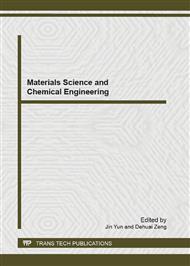p.179
p.184
p.189
p.194
p.200
p.207
p.212
p.217
p.223
Synthesis of Nimetazepam - Molecularly Imprinted Polymer and SPE Application
Abstract:
The synthesis and performance of a molecularly imprinted polymer (MIP) designed to enable the clean-up of the interferences existing in alprazolam (Alpra) drug samples is described. The MIP was synthesized using non-covalent molecularly imprinted method. Nimetazepam (Nimet), which has a similar chemical structure as the major impurities in Alpra drug samples, was used as the dummy template. Methacrylic acid was used as the monomer. Both the affinity and selectivity of the MIP for Nimet and structurally related compounds were examined through batch-rebinding studies. The specific binding amount of Nimet was determined to be 11.4 mg•g-1. The MIP was used as the sorbent in solid phase extraction (MI-SPE) and methanol was used as the washing solvent for the clean-up of Nimet in the Alpra complex samples. The effective clean-up of Nimet was achieved, with a recovery > 90% for Alpra, in the stimulated samples.
Info:
Periodical:
Pages:
200-206
Citation:
Online since:
May 2013
Authors:
Price:
Сopyright:
© 2013 Trans Tech Publications Ltd. All Rights Reserved
Share:
Citation:


